Acorn Flour is Underway!
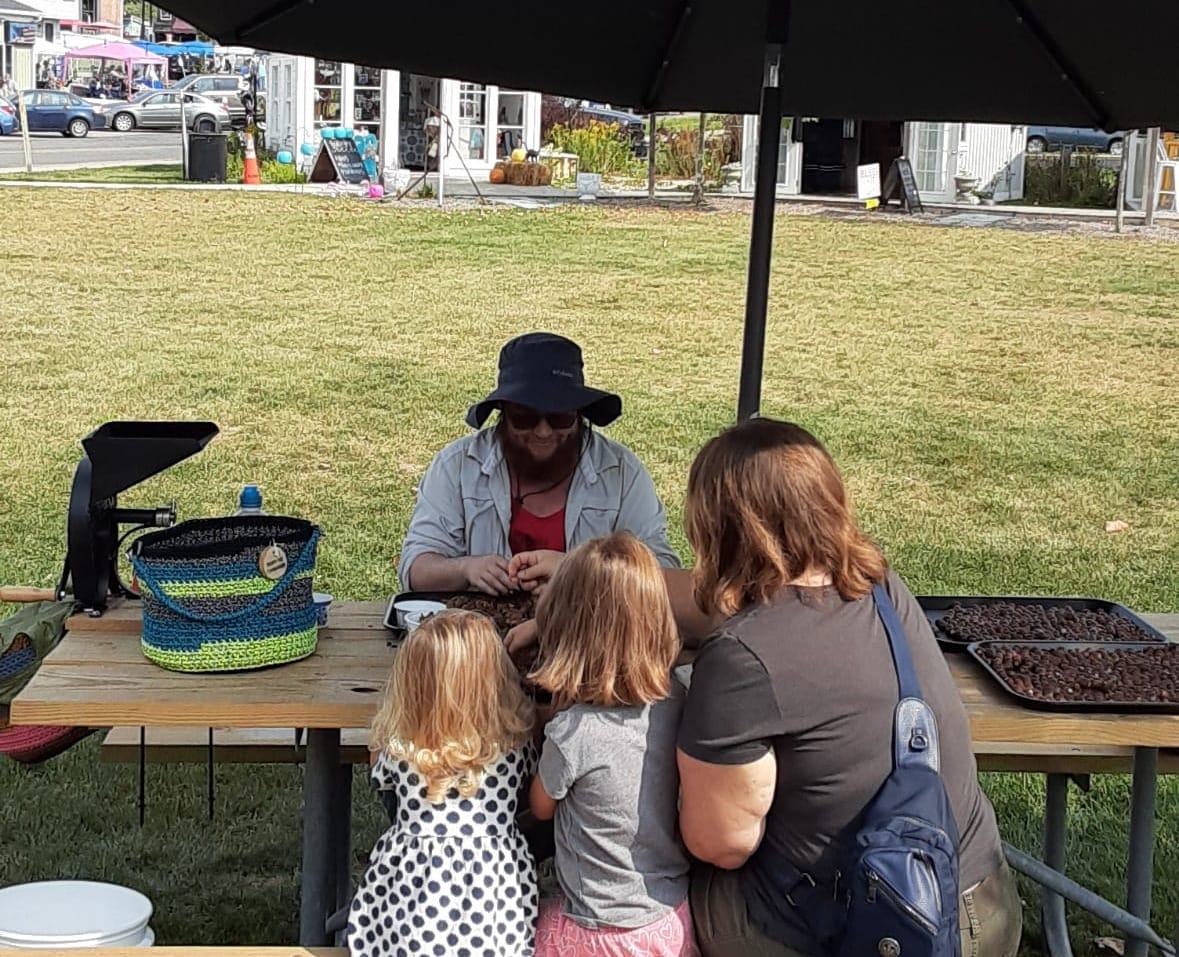
Hey all! Hope you're hanging in there. It's been a busy week this week, so let's dive right in:
This Week in the Commons
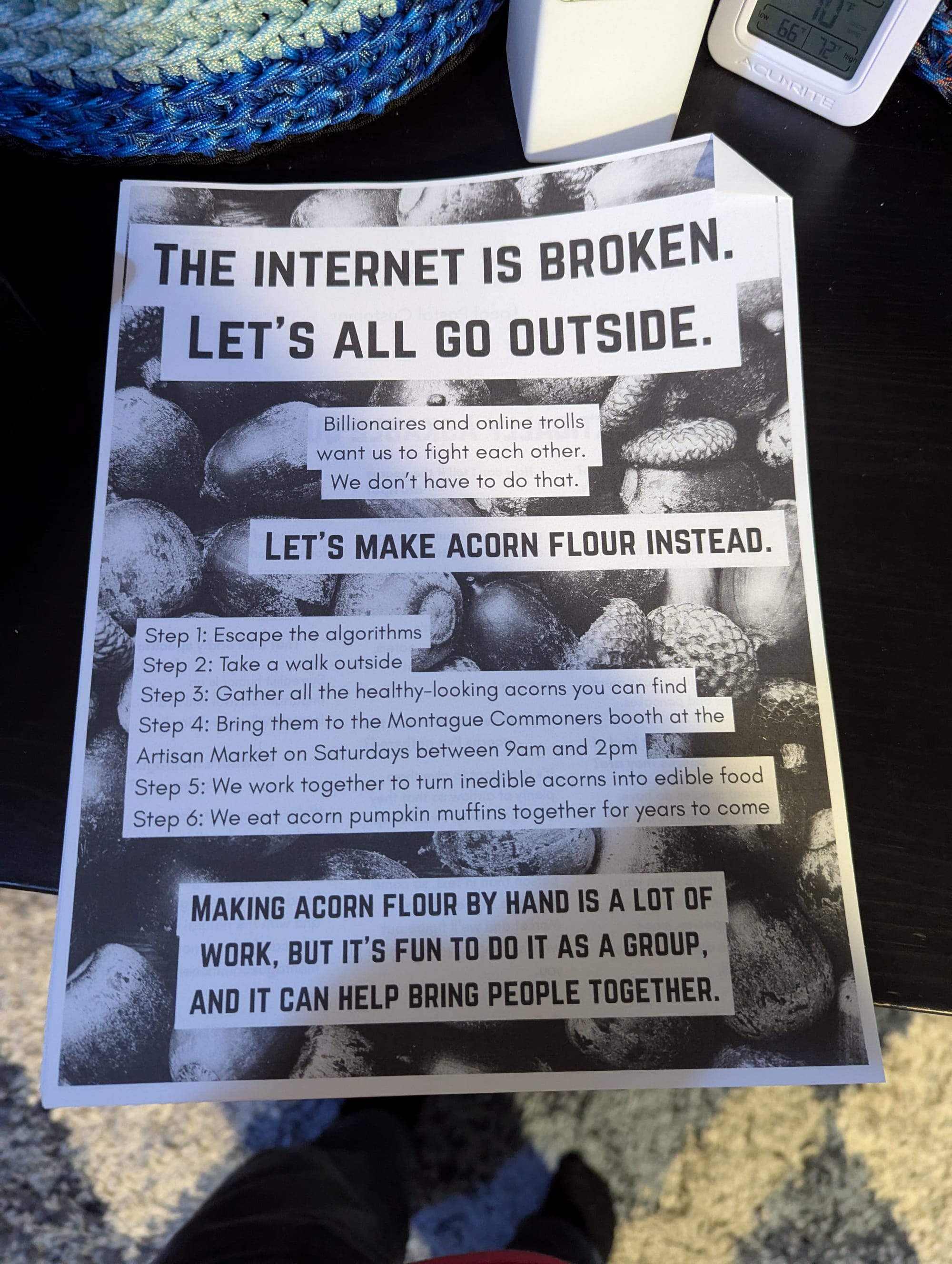
The main effort this week was getting our acorn flier out as quickly as possible. I spent most of Monday and Tuesday printing out 1300 copies and folding over the corners. (I do that because while Every Door Direct Mail is relatively cheap and convenient on my end, it's kind of a hassle for the mail carrier who has to actually deliver them. Folding the corner over makes it easier for them to get the top one off the stack, so it's my way of saying thanks/sorry for the work they're doing to deliver our flyer.)
Along the way, I was able to figure out that each batch of 50 fliers took ~30 minutes of printer time and ~10 minutes of folding time. (I have an Epson EcoJet, which is a cheap but slow option for this sort of bulk printing job.) Some of that overlapped, since the printer didn't need constant babysitting, but I'd say between the writing, printing, folding, and prepping for the post office, it was a roughly 20-25hr project.
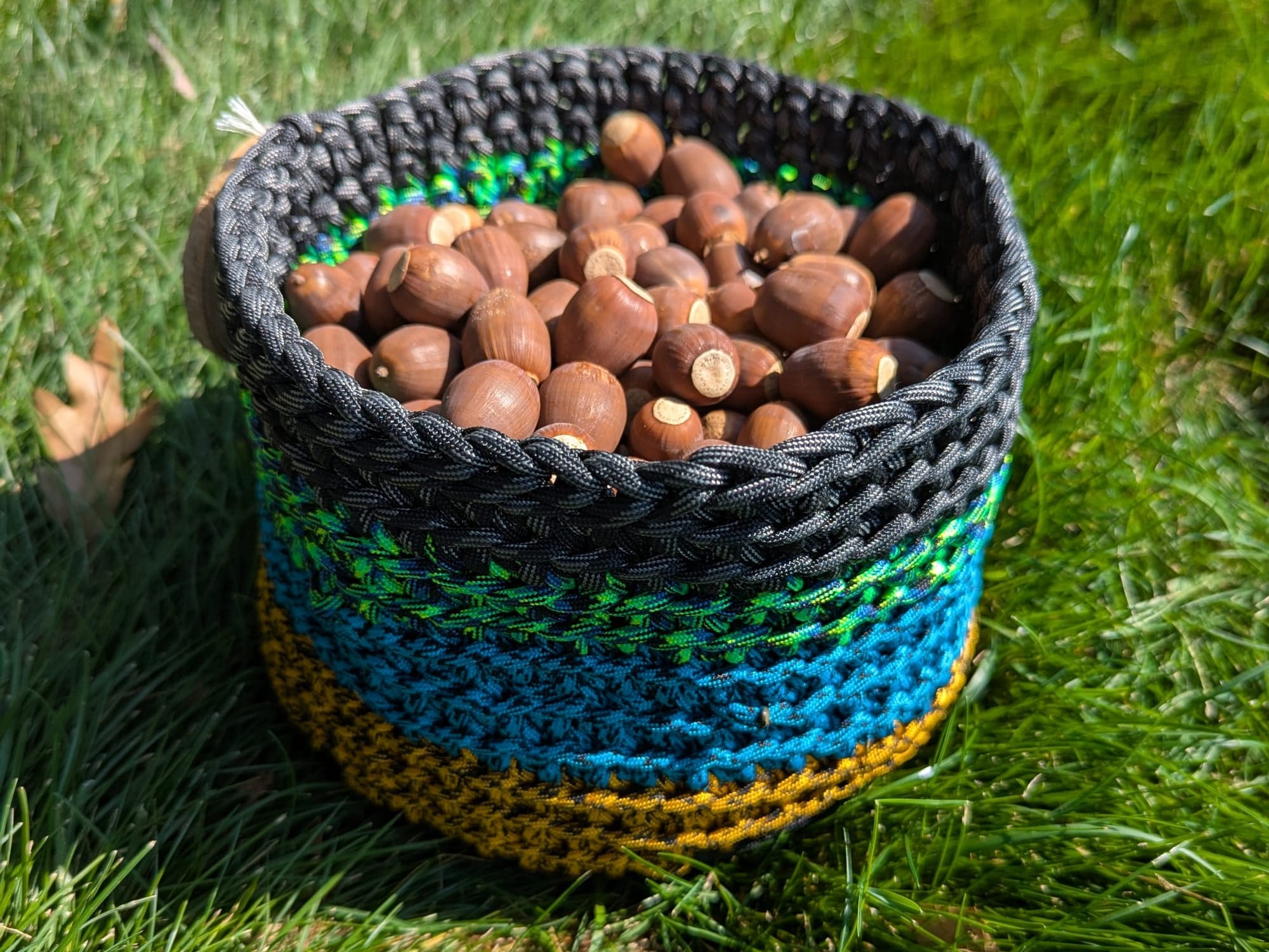
Once I had the fliers in the mail, my next priority was making sure we had some acorns to process. Luckily, some of my favorite White Oaks over in Whitehall have started dropping their main crops, so there were plenty available for gathering.
Foraging is an inherently iterative process. The first year we start working with a particular harvest, we're going to make a LOT of mistakes, and we'll be lucky to come away from it with anything we can eat. But we're guaranteed to come away from it with knowledge and experience that we didn't have before. Every harvest season comes around again, and every time it does, we have the opportunity to slot a few more puzzle pieces into place.
For this year's acorn harvest, I have two main goals in mind: recording as much data as I can along the way, and not letting any acorns go moldy. (Over the last 5 years, I've accidentally sacrificed dozens of pounds of acorns to find out ways they can go moldy, but I think I'm starting to hit on a process that works.)
So far on the data front, I've figured out that I can gather about five pounds of fresh acorns in half an hour, and that they lose about a third of their weight as they're drying. I still need to figure out some numbers on how long it takes to sort shells from nutmeat, as well as what percentage of the dry acorn weight is nut vs. shell. I'm just aiming for ballpark numbers this year, since I don't have the brainspace right now for any kind of scientific rigor, but it would be nice to have a rough estimate of how much work goes into a cup of flour so that we can eventually offer acorn flour in exchange for hour tokens.
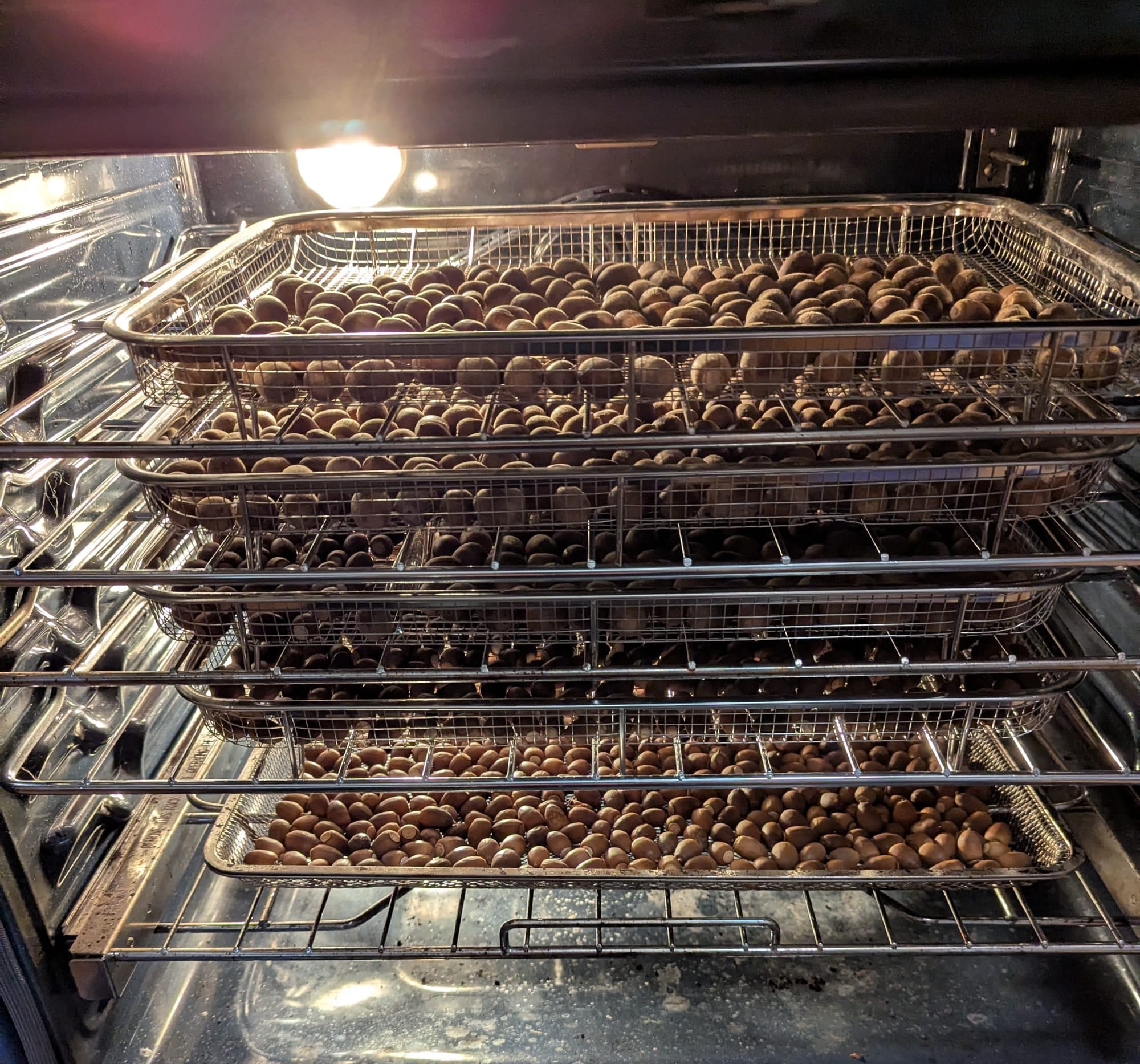
On the mold front, my main strategy is drying them as thoroughly as possible, as quickly as possible. I do this using the "dehydrate" setting on our electric oven, which gently bakes them at 150 degrees, for 12-18 hours. Nate and I dehydrate enough stuff that we bought some extra racks and trays so that we could do bigger batches at once. I've been figuring out that if I limit my gathering time to about an hour/day, I can dry all the acorns the same day that I gather them. I've also been figuring out which of my zillion gathering baskets is best sized to hold that "what I can dry in a day" quantity. Hopefully, this will be enough not to lose any batches to mold this year, but time will tell.
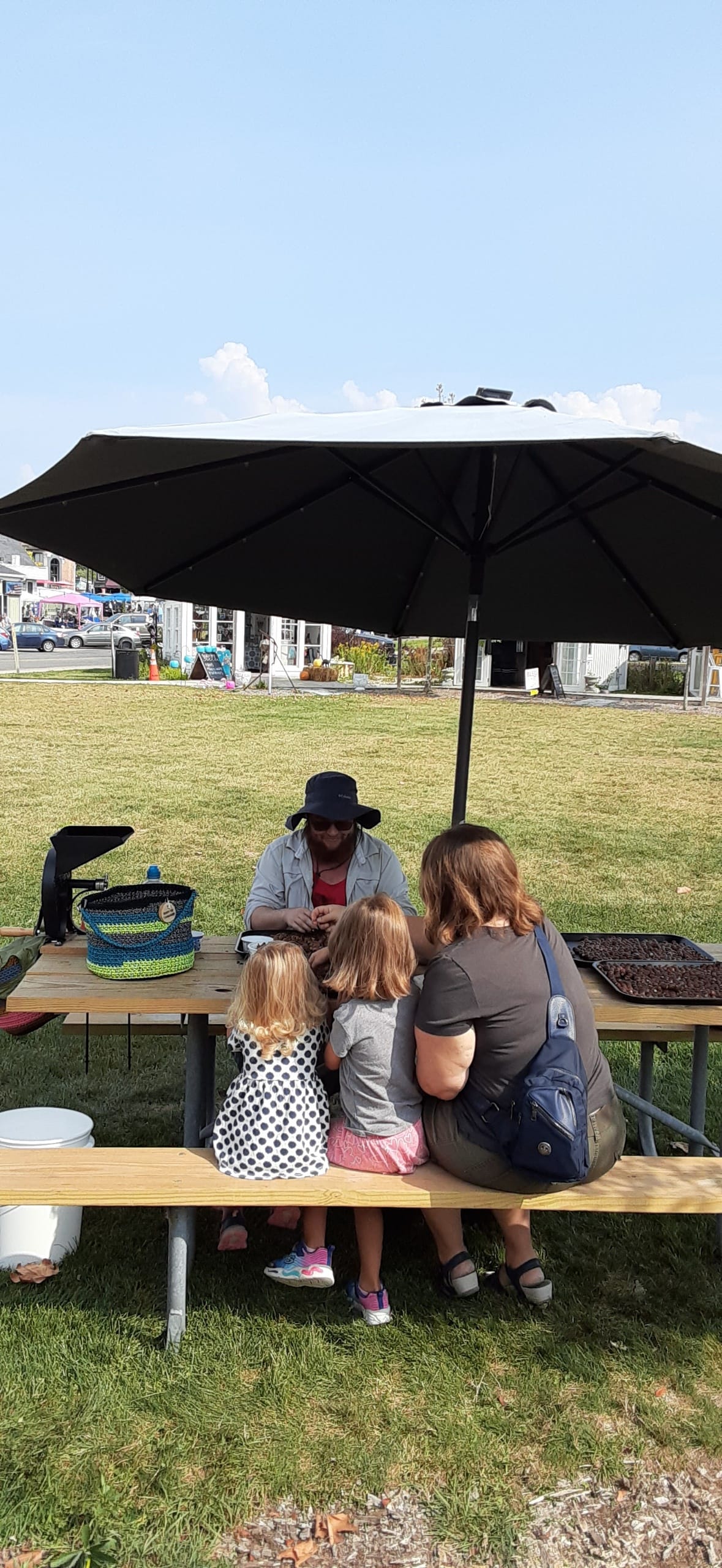
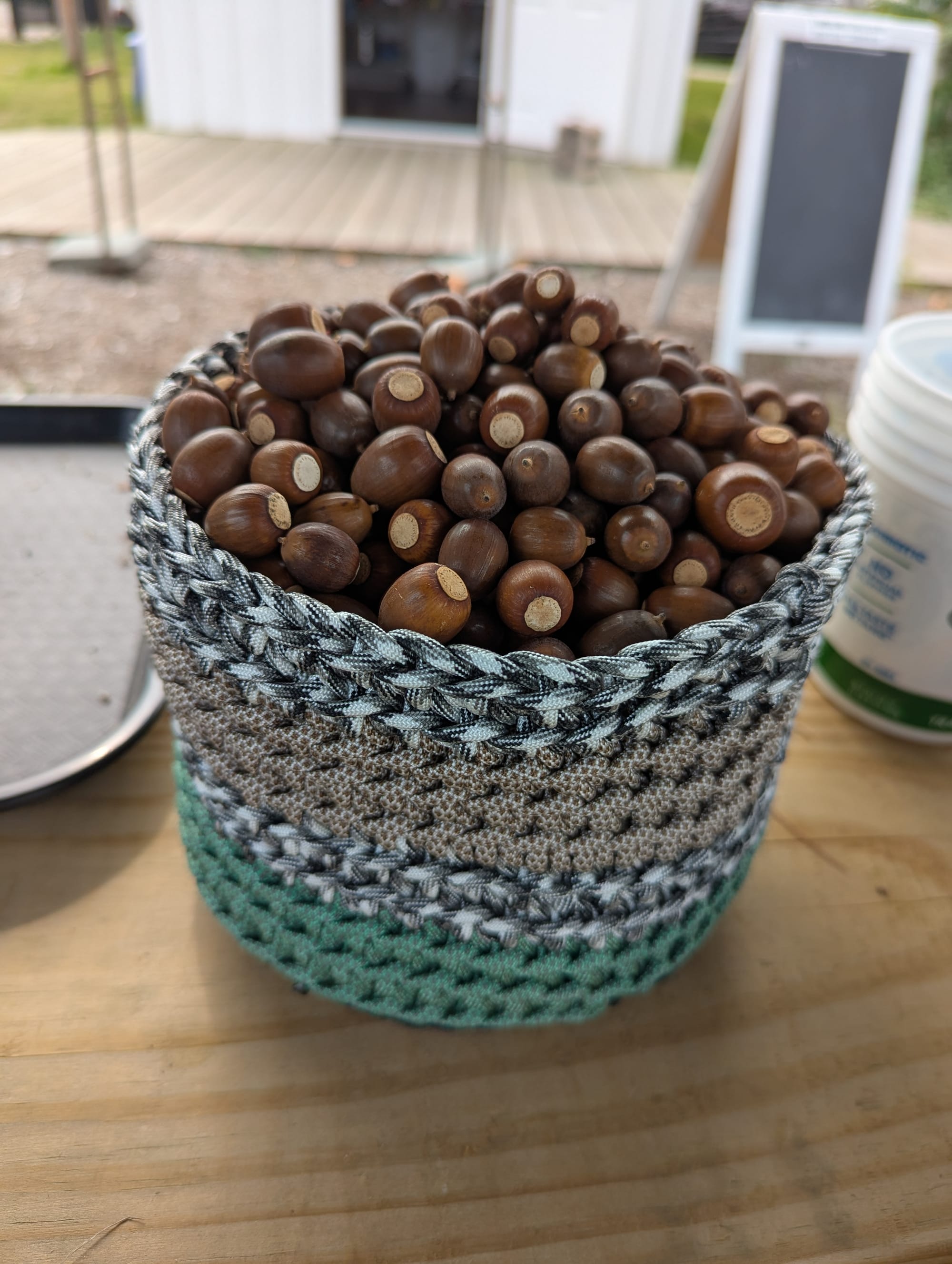
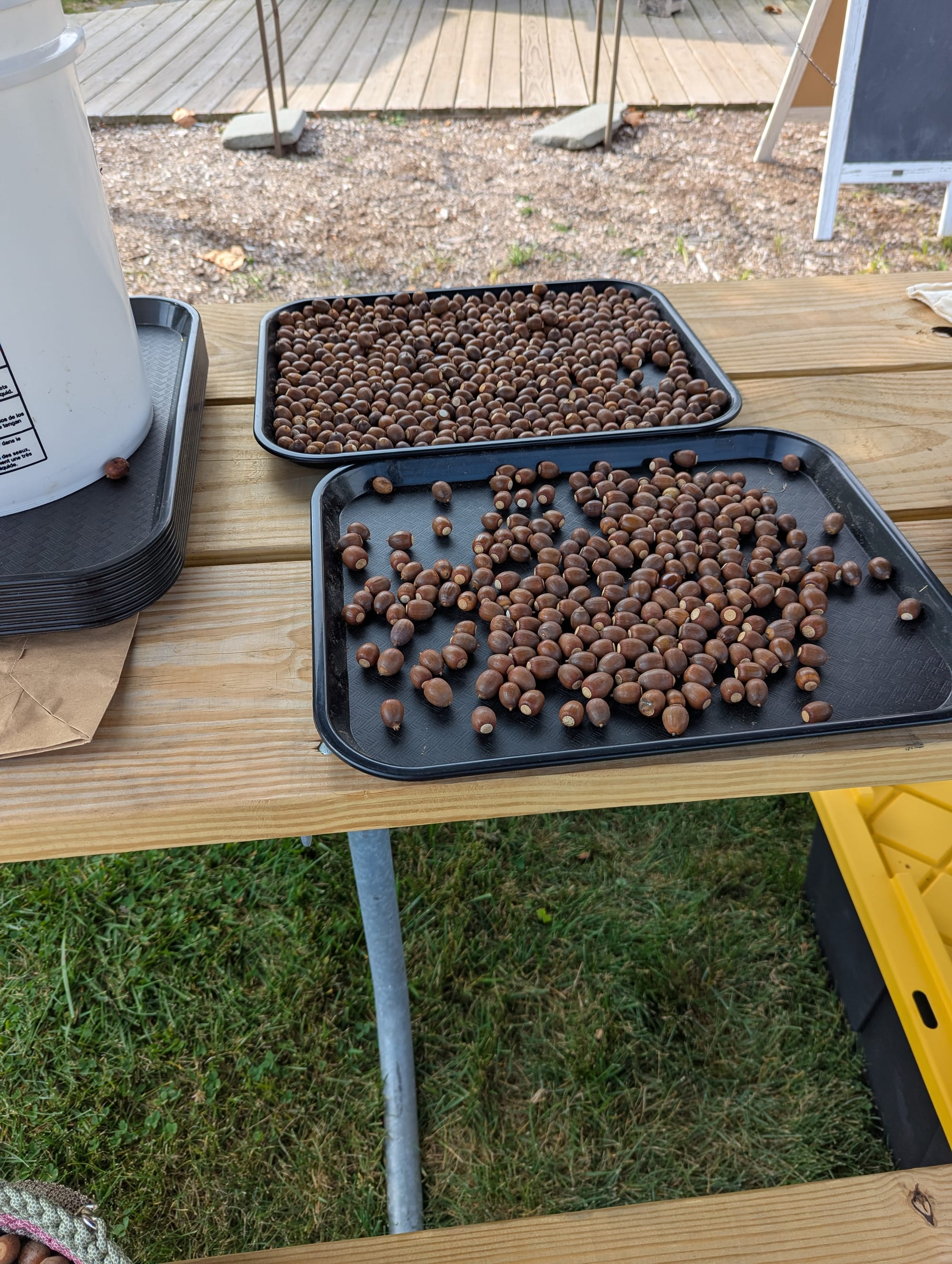
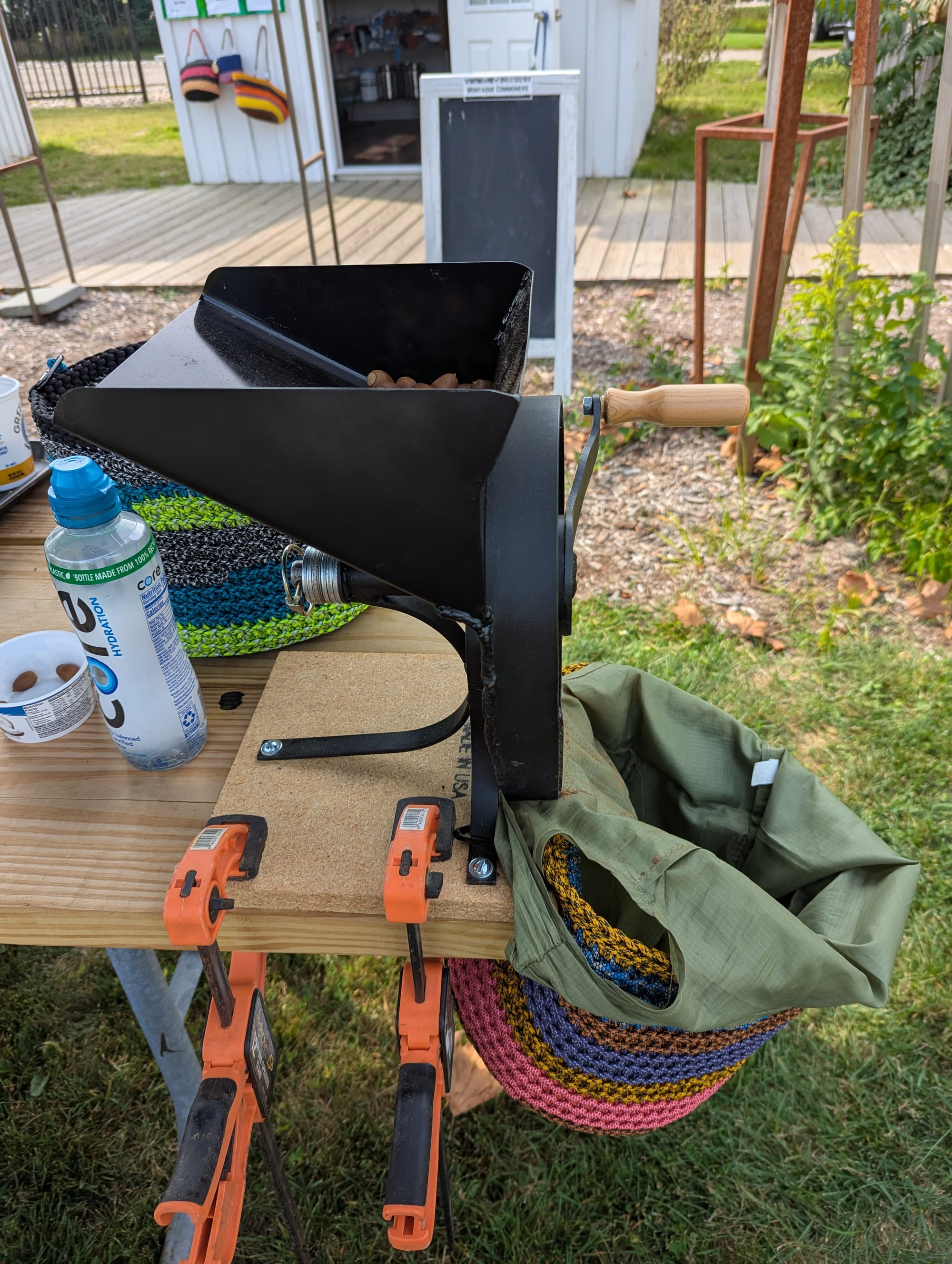

Our first day of acorn processing at the Artisan Market went quite well! We focused on the first few steps of the process, which were checking incoming nuts for signs of mold or weevils, cracking the shells of the dry nuts, and separating nutmeats from shells. We had four or five people drop off acorns, six or seven people sit down to help sort, and dozens more stop by to ask about how the process worked. We ended the day with about 8lbs of shelled nutmeats, which I'll be leaching the tannins out of this week so we can start grinding them into flour.
Extra thanks to Susan Newhof for taking pictures! It's a great way to help out, because I'm always too caught up in doing stuff to remember.

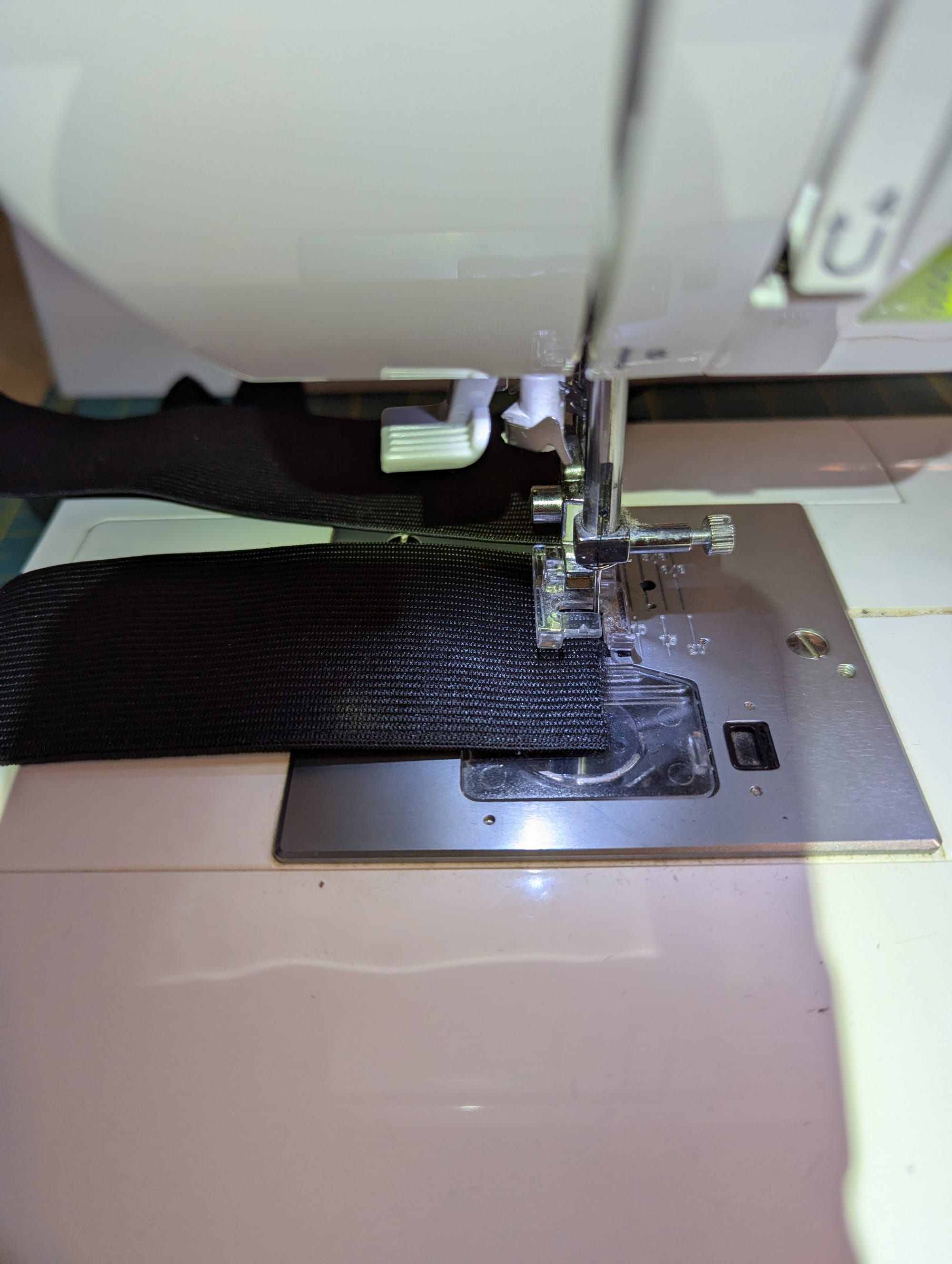
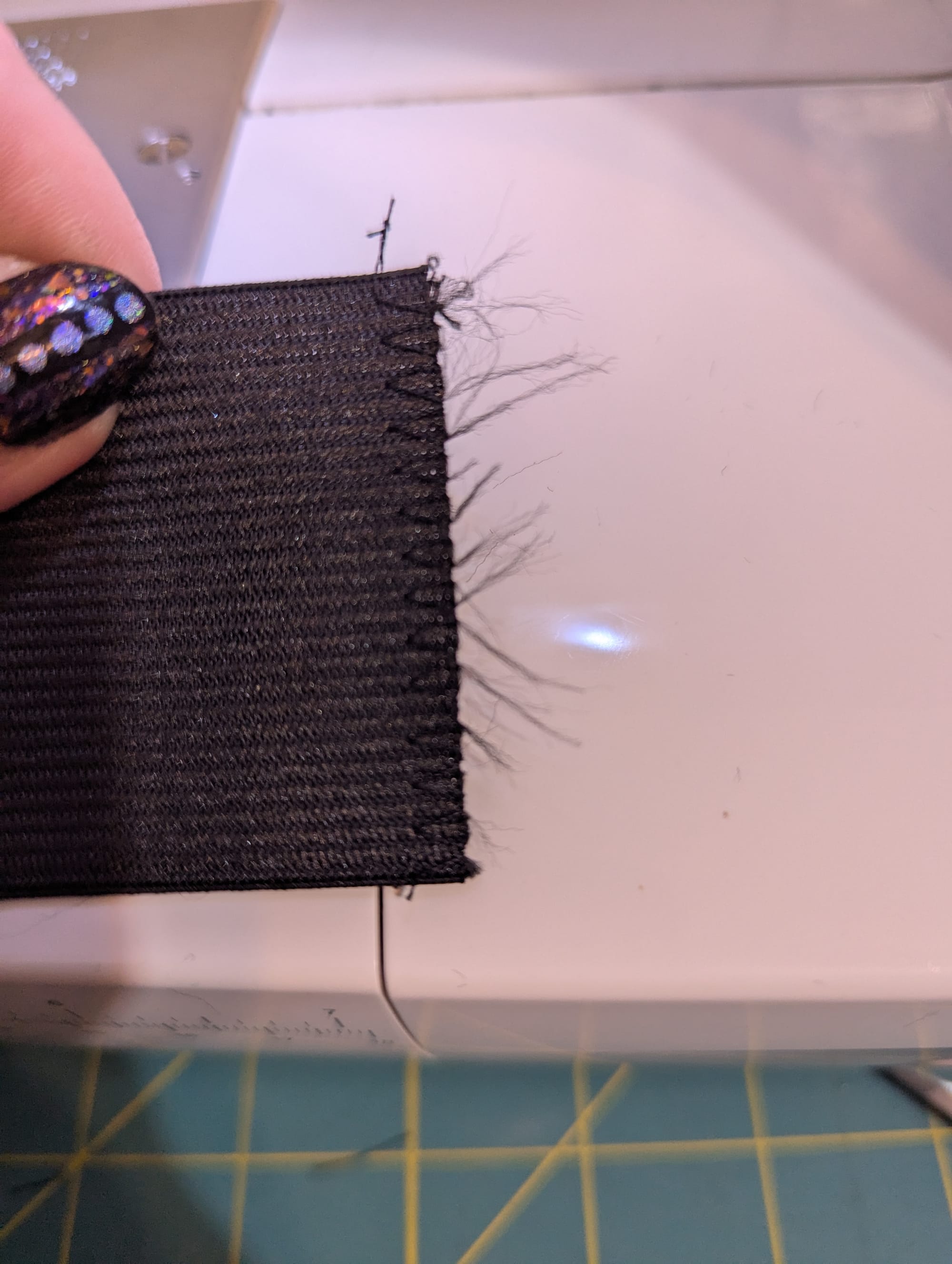

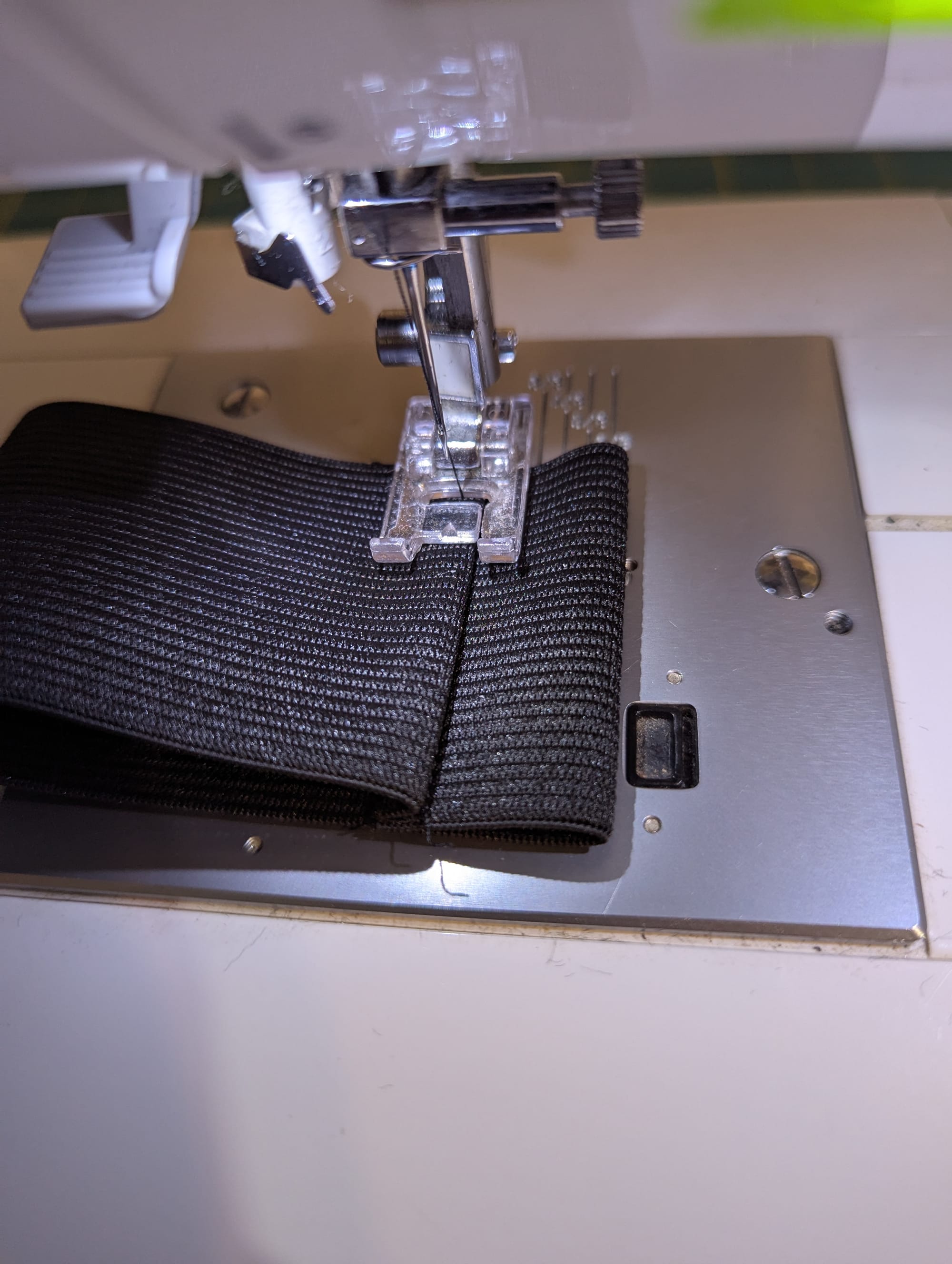
The last big thing I worked on this week was figuring out the elastic bands for the Commoner's Notepad project. This was one of the few non-upcycled materials I used for this project, so I wanted to make sure I was using it to best effect. I made several prototypes with slightly different measurements before I settled on the "standard" size. The elastic I got turned out to shed fiber like an unravelling Pomeranian, so I decided to do a zig-zag stitch along each cut edge to minimize fraying.
(To save some thread, I used an old quilter's trick where you do a bunch of short seams in a row without cutting the thread. It keeps the "tails" on the thread much shorter, and saves four or five inches of thread per seam, which can really add up over the course of an intricate quilt or a large production run. It also means you only need to snip once between each seam, instead of having to trim threads off both sides.)
Finally, I folded each piece of elastic into a sort of uneven figure 8 shape, with the big loop serving to hold the replaceable pad insert to the cover, and the small loop serving as a pen loop. I stitched up and down the join several times, to make sure that the seam wouldn't start to unravel over time.
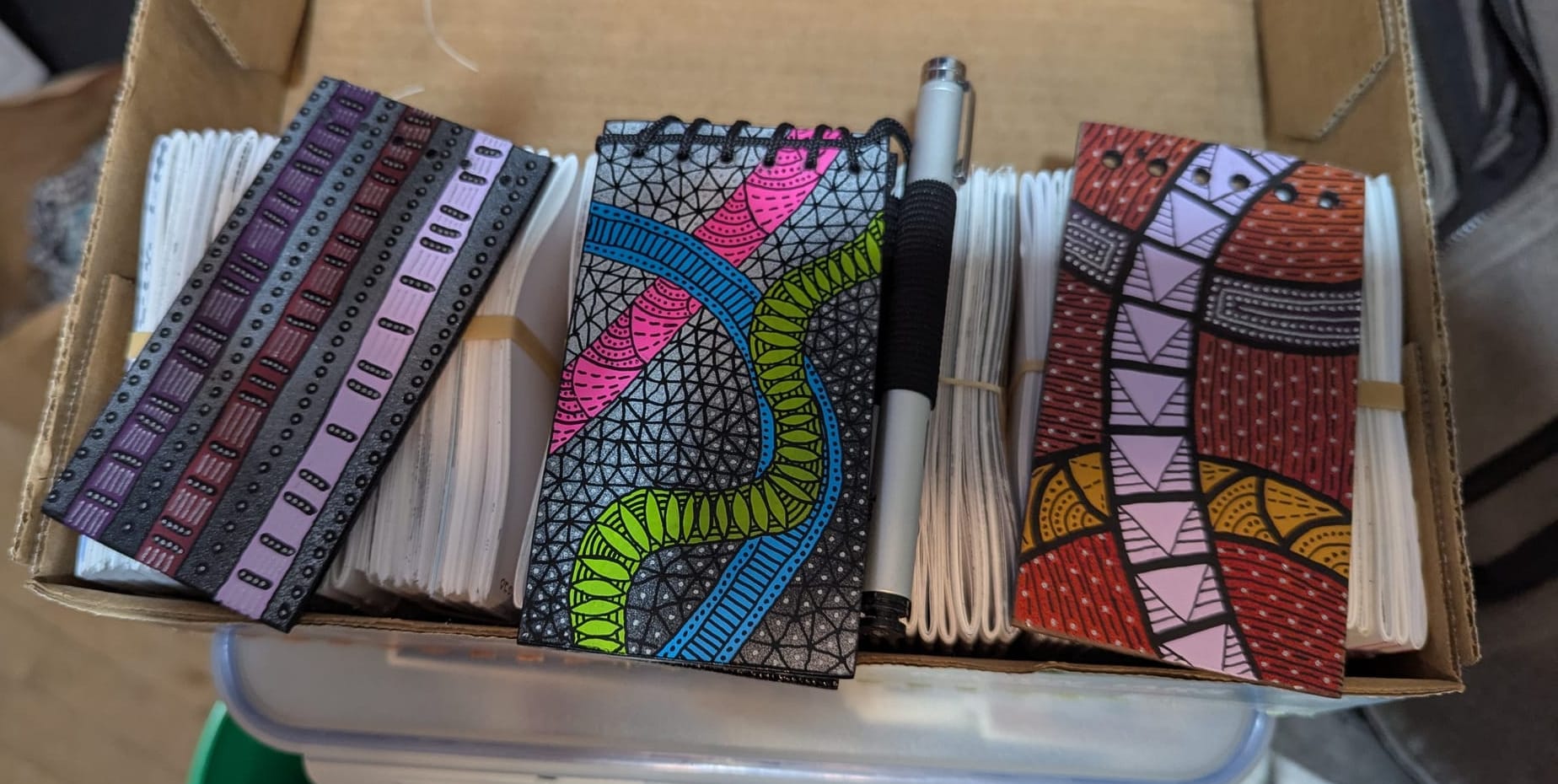
I've got enough components ready for final assembly that we might have some available in the shop next week, but I still have a lot of math to do before I know how many hours they'll cost. We'll have unpainted, spray painted, and hand painted variations available at different price points reflecting the different labor levels involved. This batch is going to be limited to 50 (because that's how much scrap hardboard we had) and I'm guessing that 50 is probably going to be enough to saturate the local reusable notepad market, but if they unexpectedly take off we can always make more. It's been a fun project, and I'm really happy with the way they're turning out.
Coming Up Next Week
Full disclosure: my brain is too fried by everything going on to do a good job with the calendar segment right now. If anyone wants to step up as the newsletter's calendar editor, it would be an enormous help. I could point you towards the sources I usually pull from, and if you tracked the time you spent on it, you could earn hour tokens.
We'll be at the Weathervane on Friday and the Artisan Market on Saturday. I'll be around town playing squirrel throughout the week, so come say hi if you see me.
Wiley Explains A Thing
I'm trying out a new segment here, because my autistic special interests keep being alarmingly relevant to the outside world, and I don't always have a way to bring the conversation around to them gracefully. This week we're going to talk about Confirmation Bias.

Confirmation bias is the tendency we all have to see information that supports our existing beliefs as more credible than information that undermines them. For example, if there was a particular musical artist whose work we saw as insightful, we might quickly believe a headline we saw on social media about that artist funding a local art center, while we'd be much more skeptical towards a headline about that artist kicking a puppy.
In unpolluted information environments, confirmation bias can be a useful heuristic that speeds up cognitive processing. When your experience of the world has consistently shown you that tables are inanimate objects, it's not a bad idea to look askance at a claim that they are all secretly birds.
Unfortunately, confirmation bias is very easy for bad actors to exploit, and in the age of social media propaganda, it has played a considerable role in our slide towards polarization. Social media companies incentivize creators to produce content that people will engage with shallowly and then share with others. Propaganda mills churn out thousands of variations of their message tailored to different communities. And both groups heavily exploit the confirmation bias "bug" in our thinking to get us to react the way they want us to. Add in deeply faulty "AI" content that can create exactly what someone wants to see, and it's a recipe for total epistemic collapse.
It's been on my mind a lot recently because of the way misinformation has been spreading since the Kirk shooting. As soon as it happened, the right wing info-sphere started using it to push their false narrative about trans mass shootings. Once the shooter was identified, the left-wing info-sphere was very quick to label him as a Groyper who thought Kirk wasn't conservative enough, despite the fervent pleas of extremism researchers that the evidence didn't support that conclusion. The truth seems to be pretty complicated, and I'm guessing we aren't going to have the whole picture for years to come.
So what do we do in the meantime? A simple step we can all take is pausing before we hit "share" on a post that "feels true". What do we know about the person who originally posted it? Are they in a position to know whether what they posted is accurate? Can we verify the information independently? Is the post adding valuable analysis or humor, or is it simply provoking outrage?
If you're interested in learning more about confirmation bias, and other cognitive biases that can effect our thinking without our knowledge, I recommend the podcast and book You Are Not So Smart. It explains complicated psychology and neruoscience in detail, while remaining accessible for a general audience.
This Week's Nails Art

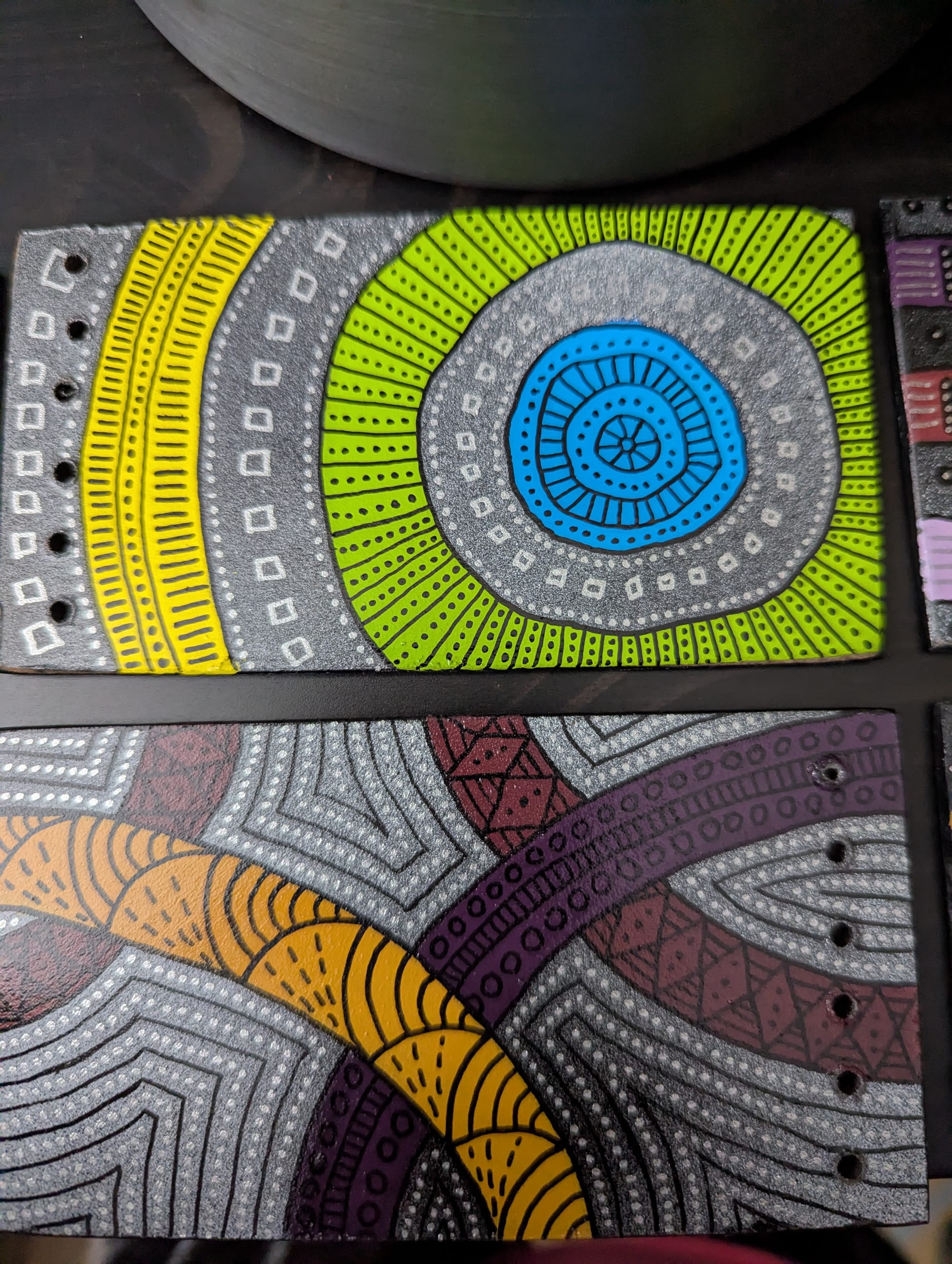
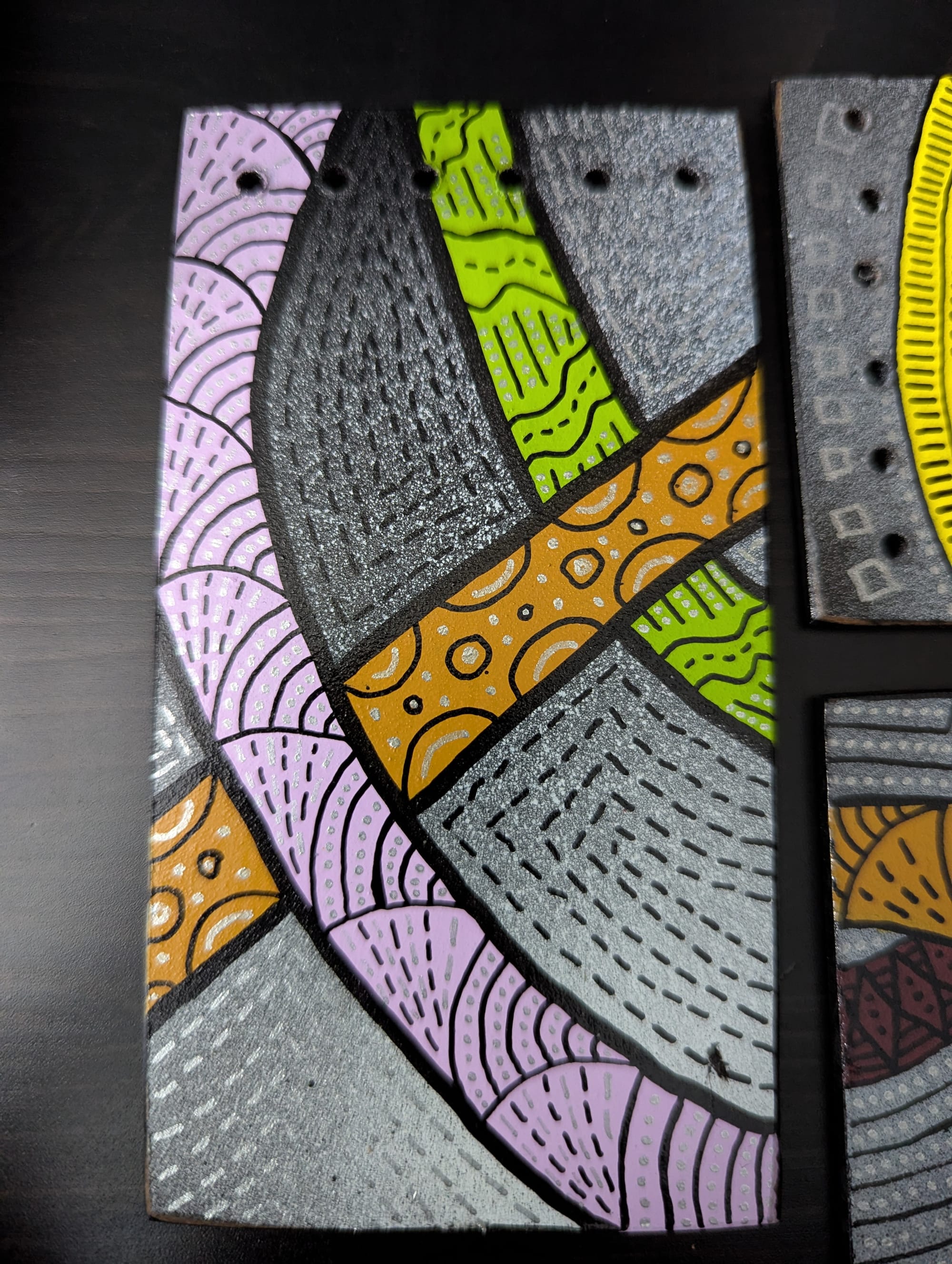
I didn't do my nails this week, but at nearly 2000 words you definitely deserve a reward for making it all the way to the end of the newsletter, so here's a preview of the hand painted notepad covers from the first batch of notepads.
Stay safe out there! Hope to see you around town.
